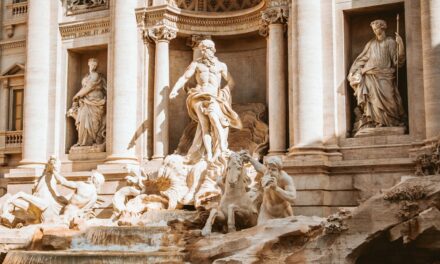Vincent van Gogh was born on 30 March 1853 in Groot-Zundert, Netherlands. He was the eldest of six children born to Theodorus van Gogh, a minister of the Dutch Reformed Church, and Anna Cornelia Carbentus. Van Gogh demonstrated an early interest in art but did not pursue it as a career until later in life.
After a series of unsuccessful career attempts, including work as an art dealer and a teacher, van Gogh decided to become an artist at the age of 27. He commenced his artistic journey by studying drawing and painting at the Royal Academy of Fine Arts in Brussels. Van Gogh’s early works were heavily influenced by the Dutch Masters, particularly Rembrandt and Frans Hals.
His time in Brussels was brief, and he subsequently moved to Paris to study with Fernand Cormon, a French painter known for his dramatic and expressive style. Van Gogh’s education extended beyond formal art training; he devoted considerable time to studying the works of other artists. He was particularly drawn to the works of Jean-François Millet, a French painter renowned for his depictions of rural life.
Van Gogh’s early life and education significantly influenced his artistic style and subject matter. His time in the Netherlands instilled in him an appreciation for the countryside and a profound connection to nature, whilst his time in Paris exposed him to the vibrant art scene and the works of the Impressionists. These early experiences established the foundation for van Gogh’s future artistic endeavours and shaped his distinctive approach to painting.
Summary
- Early Life and Education: The artist was born and raised in a working-class family in London, where he showed an early talent for drawing and painting.
- Influence and Style: His work was heavily influenced by the urban environment and industrialization, leading to a unique style that captured the energy and dynamism of modern life.
- Controversial Works: Some of his paintings were considered controversial at the time for their gritty portrayal of urban poverty and social issues.
- Relationship with Impressionism: He was influenced by the Impressionist movement, adopting their use of light and colour, but also maintained a distinct style that set him apart.
- Portrayal of Modern Life: His paintings often depicted scenes of urban leisure, such as music halls and dance halls, as well as the bustling streets and railways of the city.
- Later Life and Legacy: Despite facing financial struggles and health issues in his later years, the artist continued to produce significant work and left a lasting impact on the art world.
- Notable Works: Some of his most famous paintings include “The Camden Town Murder” and “The Bathers”.
Influence and Style
Early Influences
His early works were dark and sombre, reflecting the influence of the Dutch Masters, particularly Rembrandt. However, as van Gogh continued to develop as an artist, his style evolved into something much more vibrant and expressive.
Experimentation and Innovation
He began to experiment with bold colours and dynamic brushwork, creating works that were filled with energy and emotion. One of the most significant influences on van Gogh’s style was the Japanese woodblock prints that were becoming increasingly popular in Europe at the time. Van Gogh was captivated by the bold colours and flattened perspectives of these prints, and he incorporated these elements into his own work.
A Unique Style Emerges
His use of vibrant colours and bold, expressive brushstrokes became hallmarks of his style, setting him apart from his contemporaries. Van Gogh’s style was also heavily influenced by the Impressionists, particularly their use of light and colour. He admired the work of artists such as Claude Monet and Camille Pissarro, and he incorporated their techniques into his own paintings. Van Gogh’s use of light and colour became increasingly bold and expressive, culminating in works such as “Starry Night” and “Sunflowers.” His unique style set him apart from other artists of his time and continues to captivate audiences to this day.
Controversial Works

Vincent van Gogh’s career was marked by controversy, both in his personal life and in his artistic endeavours. One of the most controversial aspects of van Gogh’s work was his use of colour. His bold and vibrant palette was a departure from the muted tones that were popular at the time, and it often drew criticism from his contemporaries.
Van Gogh’s use of colour was seen as radical and unconventional, and it sparked heated debates within the art world. Another controversial aspect of van Gogh’s work was his subject matter. He often depicted scenes of rural life and everyday activities, which was a departure from the grand historical and mythological subjects that were popular at the time.
Van Gogh’s choice of subject matter was seen as unconventional and even vulgar by some, but it also set him apart from other artists of his time. In addition to his artistic controversies, van Gogh’s personal life was also marked by turmoil and controversy. He struggled with mental illness throughout his life, which had a profound impact on his work.
His erratic behaviour and tumultuous relationships with family and friends only added to his controversial reputation. Despite these controversies, van Gogh’s work continues to be celebrated for its boldness and originality.
Relationship with Impressionism
Vincent van Gogh had a complex relationship with Impressionism. While he admired the work of Impressionist artists such as Claude Monet and Camille Pissarro, he also sought to distinguish himself from them. Van Gogh was drawn to the Impressionists’ use of light and colour, which he incorporated into his own work.
However, he also sought to push beyond the boundaries of Impressionism, developing a style that was uniquely his own. One of the ways in which van Gogh distinguished himself from the Impressionists was through his use of texture and brushwork. While the Impressionists sought to capture fleeting moments with loose, broken brushstrokes, van Gogh’s brushwork was much more deliberate and expressive.
He used thick layers of paint and bold, swirling brushstrokes to create works that were filled with energy and emotion. Despite these differences, van Gogh’s work is often associated with the Impressionist movement. His use of light and colour, as well as his focus on capturing fleeting moments, align him with the goals of the Impressionists.
Van Gogh’s relationship with Impressionism was complex, but it ultimately enriched his work and contributed to his lasting legacy as an artist.
Portrayal of Modern Life
Vincent van Gogh’s portrayal of modern life was deeply rooted in his own experiences and observations. He was particularly drawn to scenes of rural life, depicting farmers, labourers, and landscapes with great empathy and sensitivity. Van Gogh’s portrayal of modern life was marked by a deep connection to nature and a keen awareness of the struggles faced by those living on the margins of society.
One of van Gogh’s most famous works, “The Potato Eaters,” is a prime example of his portrayal of modern life. The painting depicts a group of peasants gathered around a table, illuminated by a single lamp. Van Gogh’s use of dark, earthy tones and rough brushwork captures the harsh realities of rural life in a way that is both honest and compassionate.
In addition to his depictions of rural life, van Gogh also portrayed modern life through his use of urban scenes and everyday activities. His paintings of cafes, street scenes, and bustling city life capture the energy and vibrancy of modern society. Van Gogh’s portrayal of modern life was marked by a deep sense of empathy and an unwavering commitment to capturing the human experience.
Later Life and Legacy

Artistic Expression Amidst Adversity
Van Gogh’s later years were marked by intense creativity and a relentless pursuit of artistic expression. One of van Gogh’s most famous works, “Starry Night,” was painted during this period. The painting is a testament to van Gogh’s unique vision and his ability to capture the beauty and wonder of the natural world. Despite his personal struggles, van Gogh continued to produce works that were filled with energy and emotion, leaving behind a legacy that continues to inspire artists and audiences alike.
A Lasting Legacy
Van Gogh’s legacy extends far beyond his own lifetime. His influence can be seen in the work of countless artists who have been inspired by his bold use of colour and expressive brushwork. His impact on the art world is immeasurable, and his legacy continues to be celebrated through exhibitions, books, and films that seek to capture the essence of his unique vision.
Enduring Inspiration
Today, van Gogh’s art continues to captivate audiences around the world, inspiring new generations of artists, art lovers, and enthusiasts. His legacy serves as a testament to the power of art to transcend time and adversity, and to the enduring impact of a true creative genius.
Notable Works
Vincent van Gogh produced a vast body of work during his relatively short career as an artist. Some of his most notable works include “The Potato Eaters,” “Sunflowers,” “Starry Night,” “Irises,” and “Self-Portrait with Bandaged Ear.” These works are celebrated for their bold use of colour, expressive brushwork, and emotional intensity. “The Potato Eaters” is one of van Gogh’s earliest masterpieces, depicting a group of peasants gathered around a table in a dimly lit room.
The painting is notable for its raw depiction of rural life and its earthy tones that capture the harsh realities faced by those living on the margins of society. “Sunflowers” is another iconic work by van Gogh, depicting a series of vibrant sunflowers in various stages of bloom. The painting is celebrated for its bold use of colour and its ability to capture the beauty and vitality of nature.
“Starry Night” is perhaps van Gogh’s most famous work, depicting a swirling night sky filled with stars above a tranquil village. The painting is celebrated for its emotional intensity and its ability to capture the wonder and beauty of the natural world. “Irises” is another iconic work by van Gogh, depicting a vibrant bouquet of irises against a vivid blue background.
The painting is celebrated for its bold use of colour and its ability to capture the beauty and vitality of nature. “Self-Portrait with Bandaged Ear” is a poignant self-portrait that captures van Gogh’s intense emotional state during a period of personal turmoil. The painting is celebrated for its raw emotional intensity and its ability to capture van Gogh’s inner turmoil.
These notable works are just a small sampling of van Gogh’s vast body of work, which continues to inspire artists and audiences around the world with its boldness, originality, and emotional intensity.
If you are interested in learning more about the art movement that followed Impressionism, you should check out the article on Post-Impressionism on Thinkofart.com. This article delves into the work of artists like Vincent van Gogh and Paul Cézanne, who were influenced by the Impressionists but took their art in new and innovative directions. Click here to read more about Post-Impressionism.
FAQs
Who was Édouard Manet?
Édouard Manet was a French painter who is considered one of the pioneers of modern art. He was born on January 23, 1832, and died on April 30, 1883.
What is Édouard Manet known for?
Édouard Manet is known for his influential works in the transition from Realism to Impressionism. He is particularly known for his paintings such as “Olympia” and “Le Déjeuner sur l’herbe”.
What is the significance of Édouard Manet’s work?
Édouard Manet’s work is significant for its departure from traditional academic painting and its influence on the development of modern art. His bold use of color and brushwork, as well as his controversial subject matter, challenged the artistic conventions of his time.
What are some key characteristics of Édouard Manet’s art?
Some key characteristics of Édouard Manet’s art include his use of loose brushwork, flattened perspective, and his focus on contemporary subject matter. He also often depicted scenes of urban life and leisure activities.
What impact did Édouard Manet have on the art world?
Édouard Manet’s work had a significant impact on the art world, particularly in paving the way for the Impressionist movement. His rejection of traditional techniques and subject matter challenged the art establishment and inspired future generations of artists.




